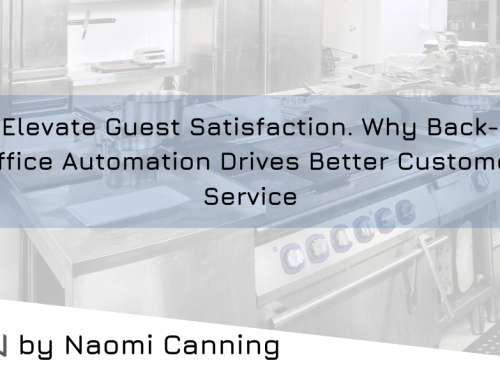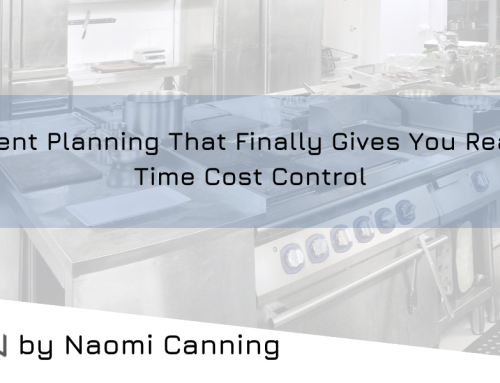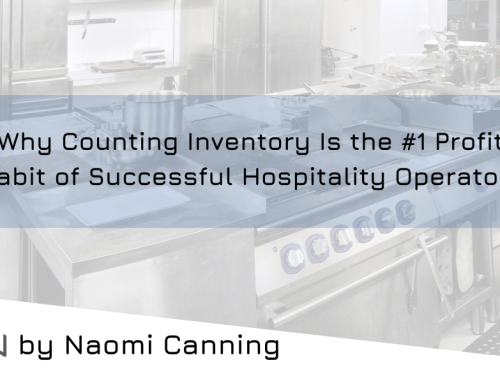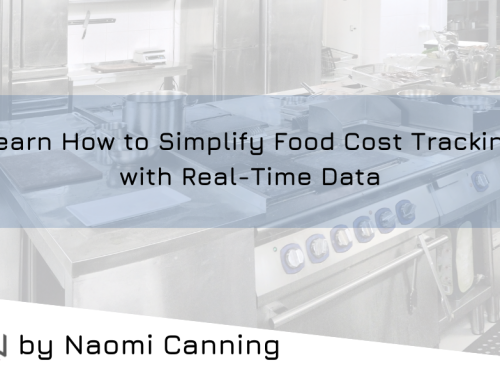Running a restaurant involves more than crafting delicious recipes, it also demands mastery over financial matters like accounting. Yet many owners find themselves struggling with this critical aspect of the business.
Our comprehensive guide on “Mastering Restaurant Accounting Methods” is here to demystify this seemingly complex area and give you control over your finances. Ready for success? Let’s dive in!
Key Takeaways
- Proper recording of transactions and creating detailed financial reports are essential for effective restaurant accounting.
- Implementing the Uniform System of Accounts for Restaurants helps streamline financial reporting and provides clear guidelines on how to record income and expenses.
- Effective inventory management is crucial for cost optimization, waste reduction, and meeting customer demand.
- Profit and loss (P&L) statements provide valuable insights into a restaurant’s financial performance, allowing owners to make informed decisions to increase profitability.
- Choosing the right accounting method, whether outsourcing or in-house, depends on factors such as control, expertise needed, cost-effectiveness, and scalability.
Understanding Restaurant Accounting
Understanding restaurant accounting involves proper recording of transactions and creating detailed financial reports.
Proper recording of transactions
Accuracy and consistency are paramount when it comes to recording transactions in your restaurant. It’s the backbone of efficient accounting, enabling you to adequately capture all financial activity within your establishment.
This includes every single sale made, each item purchased, payroll expenses and everything else that affects your balance sheet. Utilizing a reliable point-of-sale system can automate this process, ensuring every penny is accounted for accurately.
Done right, proper transaction recording promotes transparency, aids in detecting discrepancies or fraud and gives you a real-time snapshot of the financial health of your business.
Creating detailed financial reports
Accurate and detailed financial reports are essential for effective restaurant accounting. These reports provide valuable insights into your business’s financial health, allowing you to make informed decisions and identify areas for improvement.
By carefully recording all transactions, including sales, expenses, and payroll costs, you can generate comprehensive reports that track revenue and expenses over time. These reports act as a roadmap for your restaurant’s financial performance, highlighting trends and patterns that can inform strategic planning and cost control measures.
With a clear understanding of your financial position through detailed reporting, you can optimize profitability and ensure long-term success in the competitive restaurant industry.
Essential Restaurant Accounting Practices
In this section, we will explore the essential practices for effective restaurant accounting, including implementing the Uniform System of Accounts for Restaurants, optimizing tip handling procedures, managing inventory efficiently, and utilizing profit and loss statements to track performance.
The Uniform System of Accounts for Restaurants
One of the essential practices in restaurant accounting is following The Uniform System of Accounts for Restaurants. This standardized system provides a framework for recording and categorizing financial transactions specific to the restaurant industry.
By adhering to this system, restaurant owners can ensure consistency and accuracy in their accounting practices.
The Uniform System of Accounts for Restaurants covers various aspects, including revenue categories, cost classifications, and expense accounts tailored specifically to restaurants.
It helps streamline financial reporting by providing clear guidelines on how to record income from different sources such as food sales, beverage sales, and other revenue streams.
Additionally, this system outlines specific expense categories like labor costs, food costs, beverage costs, and operating expenses. By properly allocating expenses into these categories according to the guidelines provided by The Uniform System of Accounts for Restaurants, owners can gain better insights into their operational performance.
Tip handling
Proper tip handling is a crucial aspect of restaurant accounting that can greatly impact your bottom line. By implementing effective strategies, you can ensure accurate reporting and fair distribution of tips among your staff.
This involves developing clear policies for tip pooling, tracking tips received, and properly recording them in your financial records. It’s important to note that tipped employees may have different tax responsibilities compared to non-tipped employees, so understanding these regulations is key.
By incorporating best practices for tip handling into your restaurant accounting methods, you can maintain compliance with tax laws while maximizing transparency and fairness within your establishment.
Inventory management
Proper inventory management is crucial for the success of any restaurant. By effectively managing your inventory, you can optimize costs, reduce waste, and ensure that you have the necessary ingredients on hand to meet customer demand. Here are some key points to consider when it comes to inventory management:
- Accurate tracking: Keep a detailed record of all incoming and outgoing inventory items. Use a reliable system to track quantities, dates, and costs associated with each item.
- Regular stocktaking: Conduct regular physical counts of your inventory to ensure accuracy. This helps identify any discrepancies between recorded and actual quantities.
- Categorize items: Organize your inventory into categories based on their type (food, beverages, supplies) or storage locations. This makes it easier to locate items and monitor usage trends.
- Set par levels: Establish minimum and maximum stock levels for each item based on historical data and projected sales. This helps prevent overstocking or running out of essential items.
- FIFO method: Follow the “First In, First Out” (FIFO) principle when using perishable items. Use older stock before newer arrivals to minimize waste and maintain freshness.
- Vendor relationships: Cultivate good relationships with suppliers to negotiate favorable pricing and delivery terms. Compare prices regularly to ensure you’re getting the best deal without compromising quality.
- Spoilage prevention: Implement proper storage practices and rotation techniques to minimize food spoilage or expiration dates being missed.
- Utilize technology: Consider using restaurant management software that includes inventory management features. This can streamline processes, provide real-time insights into stock levels, generate reports, and simplify ordering processes.
- Analyze trends: Regularly review your inventory reports to identify any patterns or trends in consumption rates or ingredient popularity. This can help you adjust purchasing decisions accordingly.
- Train staff: Educate your team on the importance of accurate inventory management and train them on proper procedures. This empowers employees to take ownership of their responsibilities and reduces the likelihood of errors.
Profit and loss (P&L) statements
Understanding your restaurant’s financial performance is essential for success, and one key tool for measuring this is the profit and loss (P&L) statement. This report provides a snapshot of your revenue, expenses, and ultimately, your profitability over a specific period.
By analyzing your P&L statement regularly, you can identify areas where costs are high or revenue is low, allowing you to make informed decisions to increase profitability. Key metrics such as food cost percentage, labor cost percentage, and gross margin can be derived from the P&L statement.
With this information in hand, you can make adjustments to menu pricing or control operating costs more effectively. A well-prepared P&L statement will provide insights into your business’s financial health and help guide strategic decision-making that positively impacts your bottom line.
Choosing the Right Accounting Method
When it comes to choosing the right accounting method for your restaurant, you need to weigh the benefits and downsides of outsourcing versus in-house accounting. Find out which option suits your business best to optimize your financial management.
Read More.
Outsourced vs in-house accounting
When choosing an accounting method for your restaurant, you will likely be deciding between outsourcing or maintaining an in-house team. Both methods have their pros and cons and should be considered carefully to ensure they align with your business’s operational and financial needs.
| Outsourced Accounting | In-house Accounting |
| Allows restaurant owners more time to focus on core operations by delegating complex financial tasks to experts. | Provides greater control over financial processes and data, which can be crucial for restaurants with unique or complex business models. |
| Provides access to a team of accounting professionals who are up-to-date with the latest accounting practices and regulations. | Can be more cost-effective in the long run, especially for restaurants that already have administrative staff capable of handling basic accounting tasks. |
| Helps ensure accurate and timely financial reporting, which is key to making informed business decisions and avoiding common accounting errors. | Allows for quicker response to financial queries and issues as the team is readily available on-site. |
| May be more cost-efficient for small-scale restaurants or those in the start-up phase as it eliminates the need to hire a full-time accountant or accounting team. | Builds an in-house expertise that can be tailored to the specific needs of your restaurant, and fosters a deeper understanding of financial trends and anomalies over time. |
Benefits and downsides of each
Benefits of Outsourced Accounting:
- Allows restaurant owners to focus on core operations and strategic decision – making.
- Access to specialized expertise and industry – specific knowledge from accounting professionals.
- Cost-effective, as it eliminates the need for hiring and training in-house accounting staff.
- Improved accuracy and compliance with tax regulations and financial reporting standards.
- Scalability and flexibility to adapt to changing business needs.
- Limited control over the accounting process and potential delays in receiving financial reports.
- Potential security risks associated with sharing sensitive financial information with a third party.
- Lack of direct communication and potential misalignment between the outsourced accountant and the restaurant owner’s goals.
- Higher costs in the long run compared to hiring an in – house accountant for larger restaurants with high transaction volumes.
- Increased control and oversight over the accounting process, ensuring timely financial reporting.
- Direct access to financial data, allowing for quick decision-making based on real-time information.
- Better understanding of the restaurant’s unique financial situation, leading to more personalized insights and strategies.
- More effective collaboration between accounting staff and other departments within the restaurant.
- Lower costs for smaller restaurants or those with simpler accounting needs.
- Costs associated with hiring, training, and retaining qualified accounting staff.
- The need for continuous professional development to stay updated on changing tax laws and accounting regulations.
- Increased administrative burden on restaurant owners who may have limited time or expertise in managing finances.
- Risk of errors or inconsistencies if proper internal controls are not implemented or followed diligently.
Key Financial Reports and Performance Metrics
Learn how to analyze your restaurant’s financial health through key reports, such as balance sheets and income statements, along with important performance metrics. Discover the insights these tools can provide to optimize your profitability and make informed business decisions.
Balance sheet
A balance sheet is a crucial financial report that provides restaurant owners with a snapshot of their business’s financial health at a specific point in time. It lists the restaurant’s assets, liabilities, and equity, allowing owners to assess their financial position.
Assets include cash, inventory, equipment, and property owned by the restaurant. Liabilities encompass debts and obligations owed by the restaurant to suppliers or lenders. Equity represents the owner’s investment in the business.
By examining the balance sheet regularly, restaurateurs can gauge their liquidity and solvency levels. Liquidity refers to how easily assets can be converted into cash to pay off short-term liabilities like bills or wages.
Solvency relates to whether the business has enough assets to cover its long-term debts.
The balance sheet is vital for making informed decisions about future investments or funding needs based on accurate insights into overall financial stability. It helps identify areas where cost control measures should be implemented or where operational efficiency could be improved.
Income statement (P&L)
The income statement, also known as the profit and loss (P&L) statement, is a crucial financial report for restaurant owners. It provides a snapshot of a restaurant’s revenues, costs, and expenses over a specific period.
By analyzing the P&L statement, you can gain valuable insights into your restaurant’s financial performance and profitability.
The income statement outlines your revenue streams, such as food sales, beverage sales, catering events, etc., and deducts the cost of goods sold (COGS), including ingredients and raw materials used in preparing meals.
It also factors in other operating expenses like labor costs, rent/utilities, marketing expenses, insurance fees to calculate your net income or loss.
Understanding your P&L allows you to identify areas where you may be overspending or underperforming financially. For instance, if you notice that food costs are too high compared to revenue or labor costs are eating into profits heavily; it gives you an opportunity to take corrective action promptly.
Regularly reviewing the income statements helps in making informed decisions regarding pricing strategies and cost control measures.
Cash flow statements
Cash flow statements are a crucial component of restaurant accounting. These reports provide a clear picture of the money flowing in and out of your business over a specified period.
As a restaurant owner, it’s essential to have accurate cash flow statements to understand the financial health of your establishment and make informed decisions. Cash flow statements show how much cash you have on hand, track operating expenses, and reveal any potential cash shortages or surpluses.
By regularly reviewing these statements, you can identify areas where you need to increase revenue or reduce costs to maintain healthy cash flow for your restaurant. So keep an eye on your cash flow, as it is key to maintaining financial stability in the restaurant industry.
Restaurant chart of accounts
One vital aspect of mastering restaurant accounting is understanding the importance of a well-organized chart of accounts. This essential tool helps restaurant owners categorize and track their financial transactions accurately.
By assigning specific codes to different revenue sources, expenses, and assets, a restaurant can easily generate detailed reports that provide valuable insights into its financial performance.
For example, it allows for separating food costs from labor expenses or tracking specific types of sales like dine-in versus takeout orders. A properly structured chart of accounts enables owners to delve deeper into their financial data and make informed decisions about cost control, pricing strategies, and overall profitability.
With the right chart of accounts in place, restaurants can streamline their bookkeeping processes and gain a clearer understanding of their financial position without any hassle.
Key performance indicators (COGS, prime cost, EBITDA, etc.)
Monitoring key performance indicators (KPIs) is crucial for the financial success of your restaurant. COGS (Cost of Goods Sold), prime cost, and EBITDA (Earnings Before Interest, Taxes, Depreciation, and Amortization) are important KPIs that can provide insights into your operations. COGS helps you track the costs associated with producing food and beverages, while prime cost combines labor and COGS to give you a comprehensive view of your expenses. EBITDA measures your overall profitability by subtracting operating expenses from revenue.
By keeping a close eye on these KPIs, you can identify areas where costs are rising or revenues are falling. This allows you to make data-driven decisions to control costs, optimize pricing strategies, manage inventory efficiently, reduce waste, and improve overall profitability.
Understanding these financial metrics will enable you to evaluate the health of your business objectively. Regularly reviewing and analyzing these KPIs will help you identify trends over time and take proactive steps to maintain a sustainable bottom line.
Implementing effective accounting practices that focus on tracking these key performance indicators will empower you as a restaurant owner to make informed decisions that drive success in today’s competitive industry.
Finding the Right Accountant and Accounting Software
When it comes to finding the right accountant and accounting software for your restaurant, this section provides guidelines on what to look for and recommends top solutions like Toast and xtraCHEF.
Don’t miss out on these essential tips!
Guidelines for finding an accountant
Finding the right accountant for your restaurant is crucial for effective financial management. Here are some guidelines to help you in your search:
- Assess their experience: Look for accountants who have specific experience working with restaurants or similar businesses. They should understand the unique accounting needs and challenges of the industry.
- Check qualifications and credentials: Ensure that the accountant is a certified public accountant (CPA) or has relevant qualifications. This ensures they have the necessary expertise to handle your restaurant’s finances.
- Seek referrals and recommendations: Ask other restaurant owners or industry professionals for recommendations on reputable accountants they have worked with. Word-of-mouth references can provide valuable insights.
- Review their track record: Research the accountant’s background and track record in working with restaurants. Look for testimonials or case studies that demonstrate their capabilities and success in assisting similar businesses.
- Consider their availability and responsiveness: Find an accountant who is responsive and available when you need assistance or have questions about your financials. Communication is key to maintaining a strong working relationship.
- Evaluate their technology proficiency: In today’s digital age, it’s important to work with an accountant who is comfortable with restaurant-specific accounting software tools, such as Toast or xtraCHEF, which can streamline your financial processes.
- Discuss fees and billing structure: Clarify how the accountant charges for their services, whether it’s a flat fee, hourly rate, or a percentage of your revenue/profit. Understand what services are included in their fees to ensure transparency.
- Seek proactive advice: Look for an accountant who goes beyond standard bookkeeping tasks and provides proactive advice on cost-saving strategies, tax planning, and financial growth opportunities for your restaurant.
Checklist for choosing the right software
When selecting accounting software for your restaurant, it’s crucial to choose a solution that aligns with your specific needs. Here’s a comprehensive checklist to help you make the right decision:
- Identify your requirements: Determine the specific features and functionalities you need in an accounting software, such as inventory management, payroll processing, financial reporting, and integration capabilities.
- Consider scalability: Ensure that the software can grow with your business and handle increased transaction volumes, additional locations, and expanding menu offerings.
- User-friendly interface: Look for an intuitive and easy-to-use interface that will allow your staff to quickly learn and navigate the software without extensive training.
- Integration capabilities: Check if the software integrates with other systems or third-party applications you currently use or plan to implement, such as POS systems or payroll providers.
- Cloud-based vs. on-premises: Decide whether a cloud-based solution or an on-premises installation suits your business needs better. Cloud-based software offers flexibility, accessibility from anywhere with internet connectivity, automatic updates, and data backups.
- Security measures: Ensure that the software provides robust security features like data encryption, user access controls, regular backups, and compliance with industry standards (e.g., PCI DSS for credit card data).
- Cost-effectiveness: Consider both upfront costs (licensing fees) and ongoing expenses (monthly subscription fees). Also, factor in any additional charges for customer support or system upgrades.
- Customer support: Research the level of customer support offered by the software provider – 24/7 availability, dedicated account managers, online resources (knowledge base or video tutorials), and responsive technical assistance.
- Mobile compatibility: If you need real-time access to financial information while on-the-go or want to enable mobile ordering capabilities for customers, ensure that the software has a mobile app or is compatible with mobile devices.
- Reviews and recommendations: Read online reviews from other restaurant owners or seek recommendations from trusted industry colleagues to gauge the software’s reliability, user satisfaction, and overall performance.
Benefits of using Toast and xtraCHEF for restaurant accounting
Using Toast and xtraCHEF for restaurant accounting offers a range of benefits that can greatly streamline your financial operations. These software solutions are specifically designed for the restaurant industry, making them highly efficient and tailored to meet your unique needs.
One major advantage is their ability to automate time-consuming tasks, such as data entry and invoice processing. With Toast and xtraCHEF, you can say goodbye to manual input and focus on more important aspects of running your business.
Another benefit is the detailed insights these systems provide. They generate comprehensive reports that allow you to analyze sales trends, track expenses, monitor inventory levels, and optimize cost control strategies.
With access to up-to-date financial information at your fingertips, you can make informed decisions that positively impact your bottom line.
Furthermore, Toast and xtraCHEF integrate with other essential tools like point-of-sale systems and payroll software. This integration ensures seamless communication between different areas of your business, allowing for better coordination and efficiency.
Conclusion
In conclusion, “Mastering Restaurant Accounting Methods: A Comprehensive Guide For Success” is an essential resource for restaurant owners looking to optimize their financial management.
By understanding the intricacies of restaurant accounting and implementing effective practices, operators can take control of their finances and improve profitability. Whether it’s choosing the right accounting method, utilizing the right software, or finding the perfect accountant, this guide equips restaurateurs with the knowledge they need to succeed in a competitive industry.
Maximize your potential by mastering restaurant accounting methods today!
FAQs
1. Why is restaurant accounting important for success?
Restaurant accounting is crucial for success as it helps owners and managers track expenses, monitor cash flow, analyze profitability, manage inventory, calculate food costs, and make informed financial decisions to optimize operations and maximize profits.
2. What are some common restaurant accounting methods used?
Common restaurant accounting methods include the accrual method, which records transactions when they occur rather than when cash exchanges hands; the cash method, which records transactions when cash is received or paid out; and the hybrid method that combines elements of both accrual and cash accounting.
3. How can I effectively manage my restaurant’s finances?
To effectively manage your restaurant’s finances, you should establish a solid bookkeeping system to track income and expenses accurately. Regularly reconcile bank statements with financial records, implement internal controls to prevent fraud or errors, conduct regular financial analysis to identify areas for improvement, and consider outsourcing your accounting tasks to professionals experienced in the hospitality industry.
4. What are some key performance indicators (KPIs) related to restaurant accounting?
Some key performance indicators related to restaurant accounting include gross profit margin (revenue minus cost of goods sold divided by revenue), net profit margin (net income divided by revenue), food cost percentage (cost of goods sold divided by food sales), labor cost percentage (total labor costs divided by total sales), average check size per customer, and return on investment (ROI) for specific marketing campaigns or menu changes. Monitoring these KPIs can help identify areas where adjustments need to be made for improved financial performance.
General Facts
- “Mastering Restaurant Accounting Methods: A Comprehensive Guide For Success” is a valuable resource for restaurant operators looking to understand and streamline their accounting practices.
- This guide covers various aspects of restaurant accounting, including accurately recording transactions and creating detailed financial reports.
- It provides insights on the main goal of restaurant accounting, which is to track revenue and expenses, manage payroll, and control operating costs.
- The guide emphasizes the importance of proper accounting practices in ensuring the success of a restaurant business.
- It offers step-by-step guidance on different accounting methods and processes applicable to the restaurant industry.
- The guide also highlights common mistakes in restaurant accounting and provides tips on how to avoid them.
- It includes information on the right accounting tools and software that can be used to streamline accounting processes.
- The guide mentions the option of outsourcing restaurant accounting and provides insights on how to determine the best approach for individual operators.
- It addresses the specific accounting requirements of restaurants, such as inventory accounting and food and beverage accounting entries.
- The guide also provides information on the basic bookkeeping reports required in restaurants and highlights the importance of using the cash or accrual method for accounting purposes.
Source URLs
www.pos.toasttab.com/blog/on-the-line/restaurant-accounting-guide
www.lightspeedhq.com/blog/restaurant-accounting-guide
www.freshbooks.com/hub/accounting/accounting-restaurants
www.synder.com/blog/guide-to-restaurant-bookkeeping
rasiusa.com/blog/restaurant-accounting-complete-guide
www.restaurant365.com/blog/the-essential-guide-to-modern-restaurant-accounting-2





